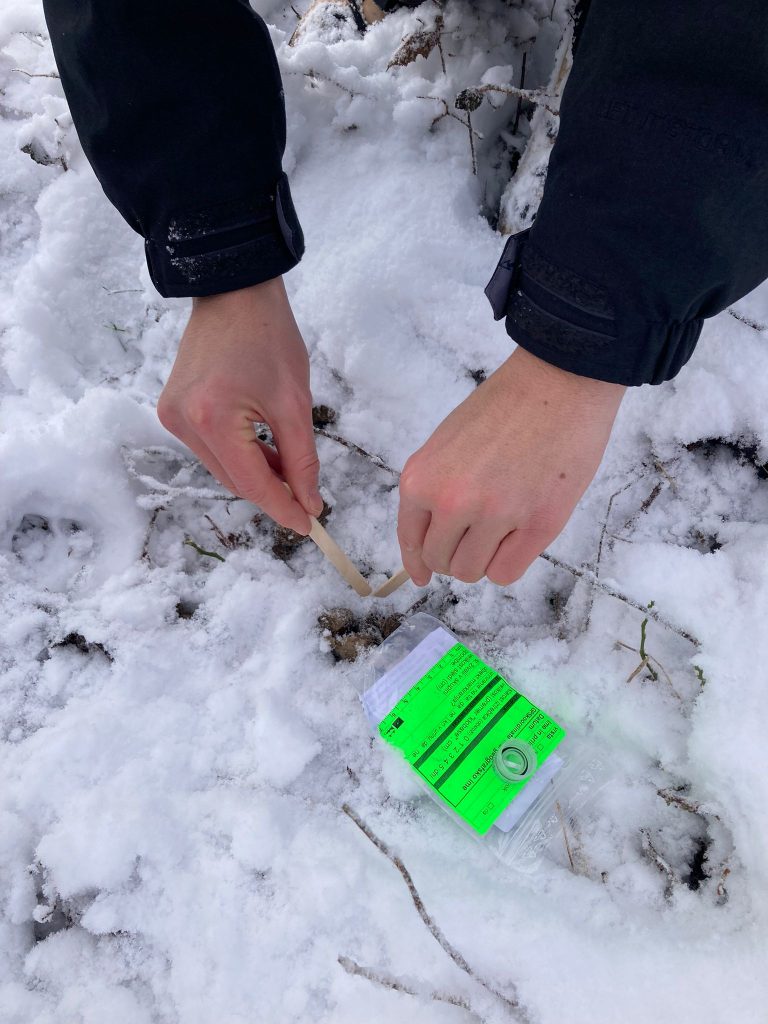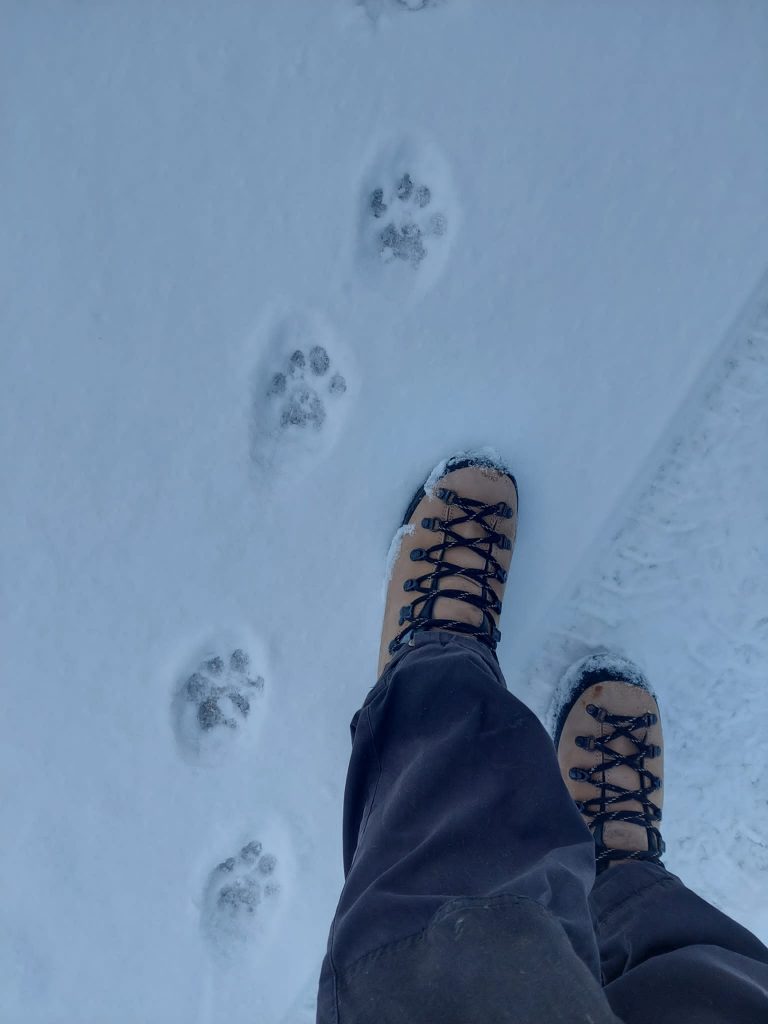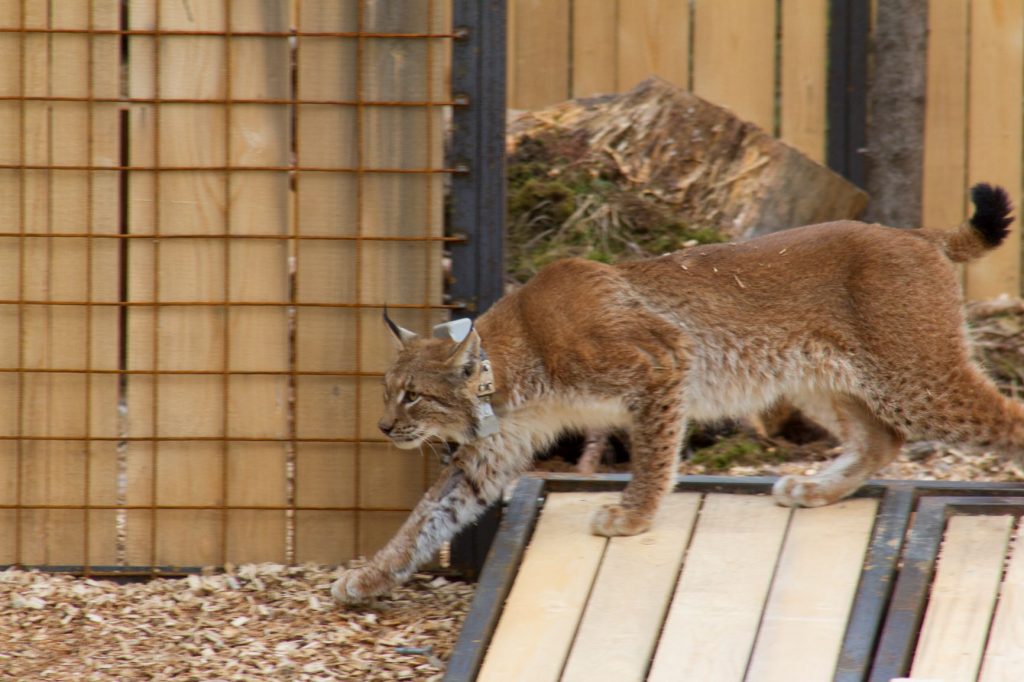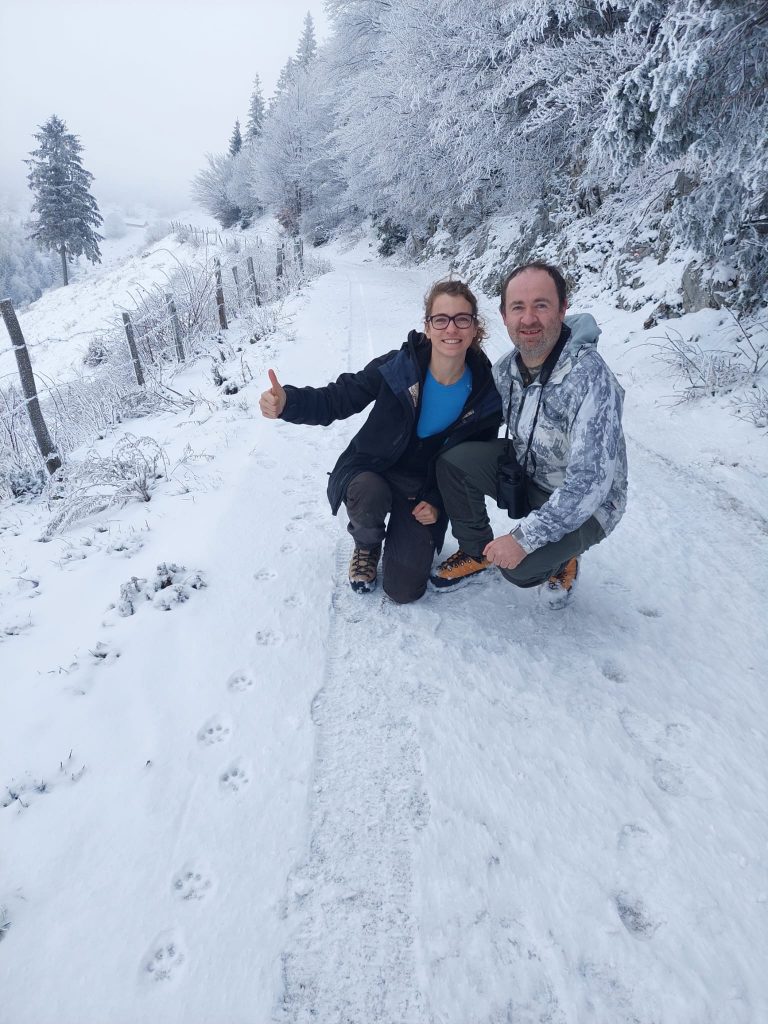Genetic analyses have confirmed that one of lynxes Aida and Zois’s offspring has left his mother’s territory on Jelovica area and is establishing his territory in the area of Mt. Razor. This is the first step towards the expansion of a lynx stepping-stone population in the Slovenian Alps and in the long-term connection of the Dinaric lynx population with the Alpine populations.
In the first snow of December, a professional hunter from Prodi-Razor State Managed Hunting Ground found fresh lynx tracks on the forest road leading to Mt Razor. LIFE Lynx team members then through winter tracking obtained some non-invasive genetic samples (urine and scats) for analysis. We also set up three photo-traps, but so far, we have no photos of the lynx.

Collecting a genetic sample of a lynx’s scat. Photo: Tilen Hvala, LIFE Lynx

Following the lynx’s footsteps. Photo: Urša Fležar, LIFE Lynx
Given the frequent marking, which is typical for territorial animals, we already guessed it is most likely an adult male. Our suspicions were then confirmed by genetic analysis, which revealed that the now adult lynx is a cub from the first litter of Aida and Zois, lynxes relocated from Romania in 2021.

Release of lynx Aida, April 2021. Photo: Janez Tarman
Reliable information from the field is always the first to prompt further research into the presence of lynx by scientifically verifiable methods; photo-trapping or genetic analysis. This is why we would like to see local hunters continue to be involved in monitoring the development of the lynx population after the introductions. For the long-term conservation of the lynx, it is crucial to maintain the cooperation between hunters and experts that we have established with the LIFE Lynx project.

Team member Urša with a local hunter, who found lynx tracks. Photo: Tilen Hvala, LIFE Lynx
